Amazing Facts About The Fastest Animals In The World
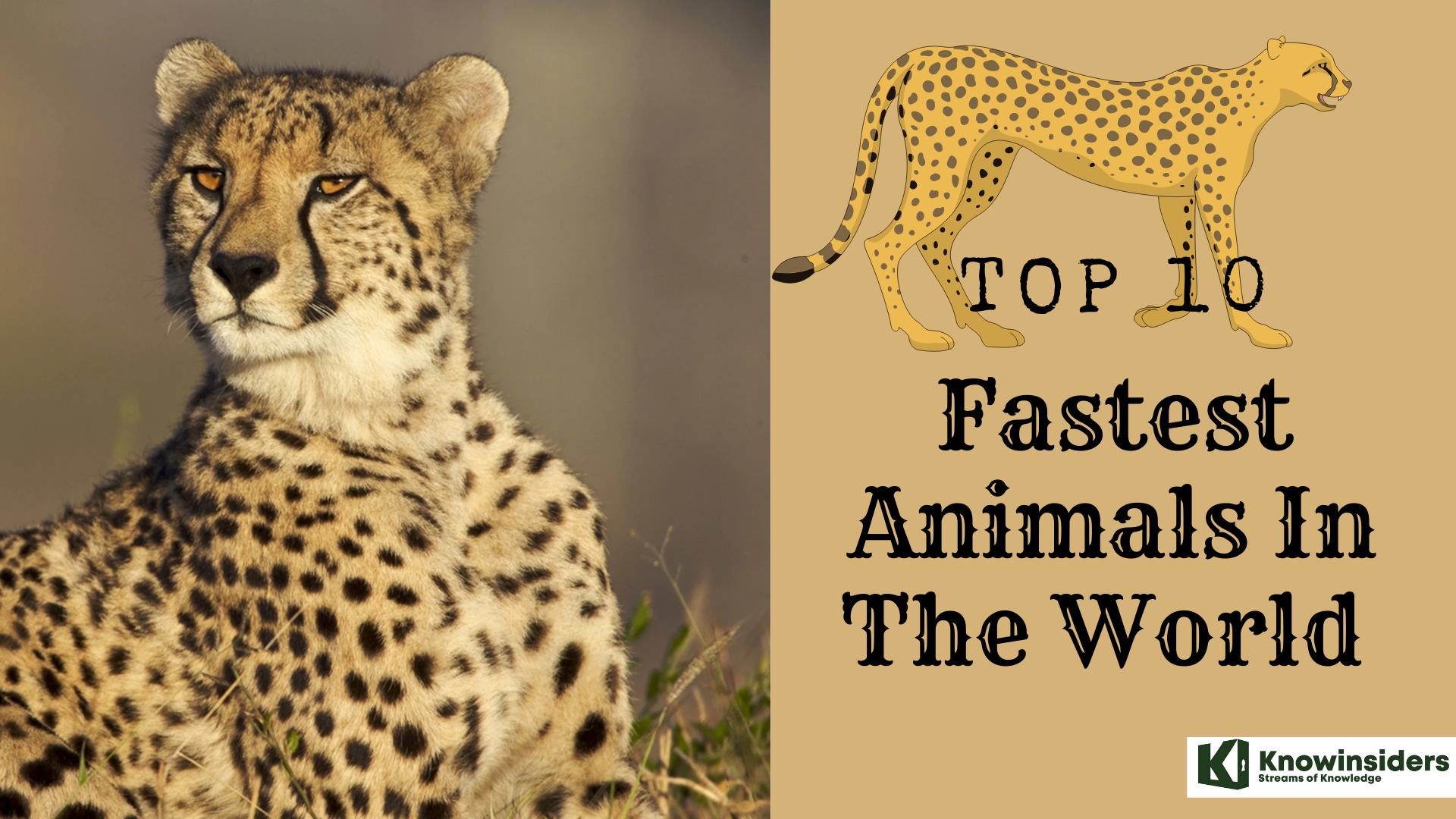 |
| Top 10 fastest animals in the world |
In the animal kingdom, speed can mean the difference between life and death. Predators use their speed to overtake and overpower their prey, while animals with few other defenses rely on speed to avoid becoming dinner. Here are some of thefastest animals in the world.
The list of top 10 fastest animals in the world
10. Brown Hare
9. Blue Wildebeest
8. Marlin
7. Pronghorn Antelope
6. Sail Fish
5. Cheetah
4. Spur-Winged Goose
3. Frigate Bird
2. White Throated Needletail
1. Peregrine Falcon
What are the fastest animals in the world?
10. Brown Hare
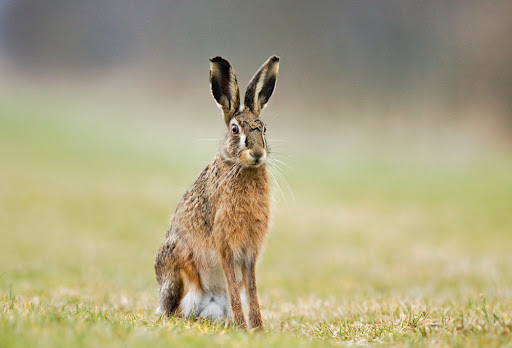 |
| Photo: New Forest Commoners |
The brown hare is known for its long, black-tipped ears and fast running - it can reach speeds of 45mph when evading predators. It prefers a mosaic of farmland and woodland habitats and can often be spotted in fields.
Thought to have been introduced into the UK in Roman times (or even earlier), the brown hare is now considered naturalised. It is most common in grassland habitats and at woodland edges, favouring a mosaic of arable fields, grasses and hedgerows. It grazes on vegetation and the bark of young trees and bushes. Brown hares do not dig burrows, but shelter in 'forms', which are shallow depressions in the ground or grass; when disturbed, they can be seen bounding across the fields, using their powerful hind legs to propel them forwards, often in a zigzag pattern. Brown hares are at their most visible in early spring when the breeding season encourages fighting or 'boxing'. Females can produce three to four litters of two to four young (known as leverets) a year.
The brown hare is golden-brown, with a pale belly and a white tail. It is larger than the rabbit, with longer legs and longer ears with distinctive black tips.
9. Blue Wildebeest
 |
| Photo: Animal Database |
The ungainly gnu (pronounced “g-new” or simply “new”) earned the Afrikaans name wildebeest, or “wild beast,” for the menacing appearance presented by its large head, shaggy mane, pointed beard, and sharp, curved horns. In fact, the wildebeest is better described as a reliable source of food for the truly menacing predators of the African savanna: lions, cheetahs, wild dogs, and hyenas.
The blue wildebeest is a member of the antelope family, although its heavy build and disproportionately large forequarters make it look more bovine. Blue wildebeests can reach 8 feetin length, stand 4.5 feet tall at the shoulders and weigh up to 600 pounds. Both males and females grow horns.
Up to 500,000 calves are born in February and March each year, at the beginning of the rainy season. Calves learn to walk within minutes of birth and within days are able to keep up with the herd. Wildebeests can live to be 20 years old.
The Blue Wildebeest, Springbok and Thompson’s gazelle can all run at about 80kph (50mph) which almost exactly matches the top speed of a lion.
8. Marlin
 |
| Photo: Marlin Magazine |
Marlin can swim at 80kph (50mph), just beaten for the title of the world’s fastest fish by the super speedy Sail Fish.
The strikingly beautiful blue marlin is the largest of the Atlantic marlins and one of the biggest fish in the world.
Females, which are significantly larger than males, can reach 14 feet in length and weigh more than 1,985 pounds. Average sizes tend to be in the range of 11 feet and 200 to 400 pounds.
Native to the tropical and temperate waters of the Atlantic, Pacific, and Indian Oceans, blue marlins are among the most recognizable of all fish. They are cobalt-blue on top and silvery-white below, with a pronounced dorsal fin and a long, lethal, spear-shaped upper jaw.
They are so-called blue-water fish, spending most of their lives far out at sea. They are also highly migratory, and will follow warm ocean currents for hundreds and even thousands of miles.
Blue marlins prefer the higher temperature of surface waters, feeding on mackerel and tuna, but will also dive deep to eat squid. They are among the fastest fish in the ocean, and use their spears to slash through dense schools, returning to eat their stunned and wounded victims.
 Amazing Facts About The Slowest Animals In The World Amazing Facts About The Slowest Animals In The World Some animals are slow, and some are extremely fast. So what are the slowest animals in the world? Keep reading the article below to know ... |
7. Pronghorn Antelope
 |
| Photo: iStock |
Traveling at speeds of up to 60 miles per hour across the sagebrush sea, pronghorn are the fastest land mammal in North America. They are crepuscular, meaning that they are most active at dawn and dusk, however they can be spotted at any time of day.
The only species in their antilocapra genus, North American pronghorn are unique and have no relation to African antelope. However, pronghorns evolved alongside cheetahs. Many (but not all) pronghorn herds are migratory, traveling long distances to warmer climates in the fall, and back to greener locations in the spring. Fences are one of the greatest barriers to their survival during these migrations, because although pronghorn are fast, they don’t like to jump, so when a pronghorn encounters a fence it may not know how to get around it.
Somewhat similar in appearance to a long-legged goat, pronghorns are generally reddish tan in color, with white patches on the chest, neck, underbelly, and rear-end. Both males and females can have horns, although female horns are much smaller, reaching only 4 inches in length whereas male horns can be as long as 20 inches.
Pronghorns are also distinguished by their large, round eyes, the largest of any hoofed animal in relation to size. Their eyes are dark with defined eyelashes, and provide the animals with nearly 300 degrees of vision.
In addition to sagebrush country, pronghorn can be found in grasslands, deserts, river basins, and just about any wide open space. They once were found across the country from Canada to Mexico.
6. Sail Fish
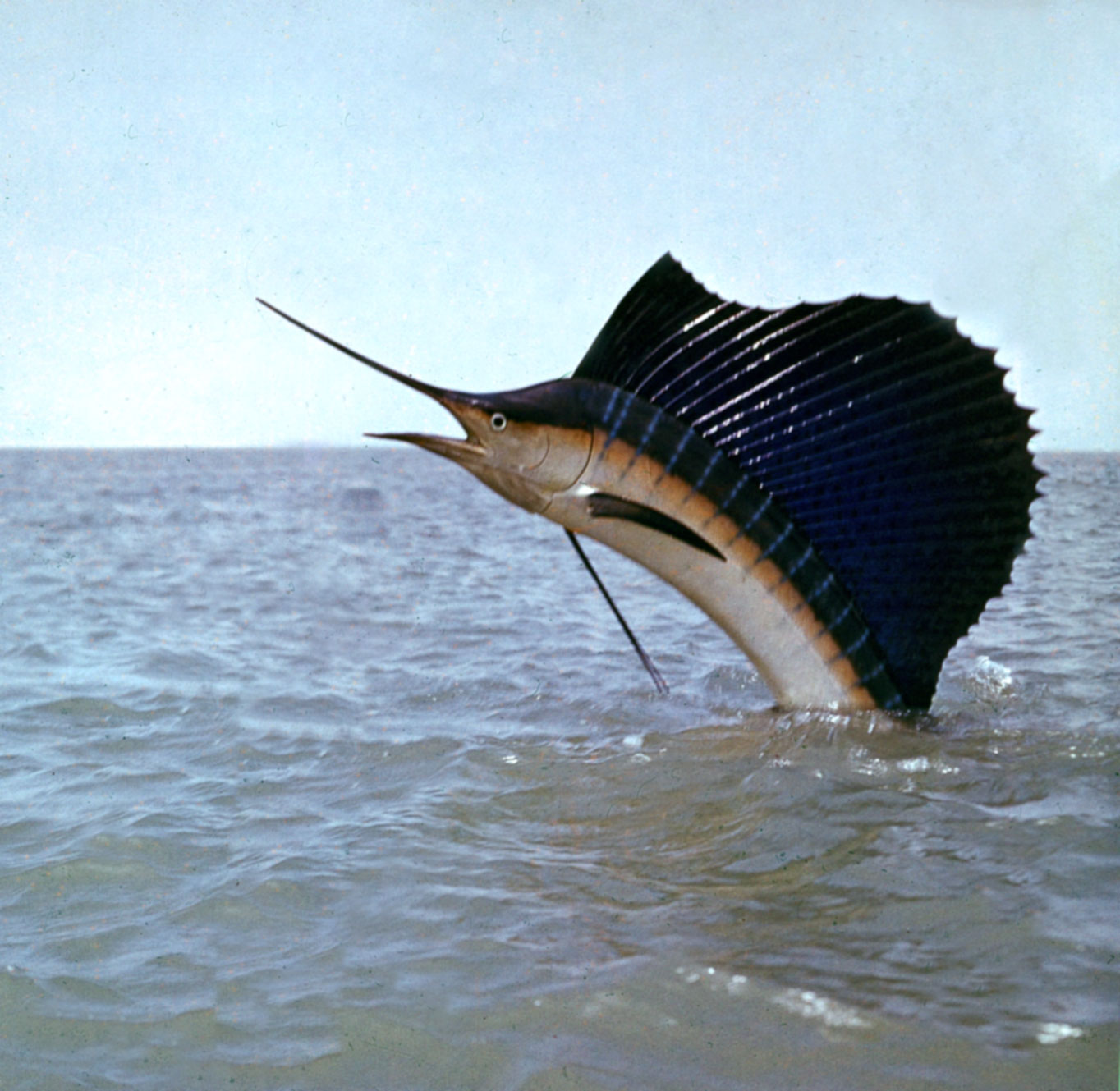 |
| Photo: Getty Images |
The sail fish is easily the world’s fastest fish, speeding through the water at 110kph (68mph)!
Sailfish are a type of billfish (like the blue marlin or swordfish) that are known not only for their pointed bills, but also their extraordinary dorsal fins that can be taller than the length of their bodies. Sailfish start out as tiny larvae, no more than a few millimeters in length, but grow rapidly during their first year. They can grow from 0.125 inches (0.3 cm) when born to 10 feet (3 m) long from bill to tail and weigh upwards of 220 pounds (100 kg) in adulthood.2 Like other billfish, female sailfish can be larger than males so they can carry as many eggs as possible and have a greater chance of successful reproduction in the open ocean.
Sailfish eat a wide variety of prey throughout their lifetimes. At a young age, they eat tiny zooplankton, and their prey increases in size as they do. As adults, they eat fairly large bony fishes, crustaceans and squid. Sailfish also work together, using their dorsal fins to create a barrier around their prey, in order to feed on smaller schooling fish, such as sardines and anchovies.
Sailfish are eaten by a wide variety of predators. When newly hatched, sailfish are preyed on by other fishes that specialize on eating plankton. The size of their predators increases as they grow, and adult sailfish are not eaten by anything other than larger predatory fish like open ocean shark species, orcas and dolphinfish (also known as Mahi Mahi).
5. Cheetah
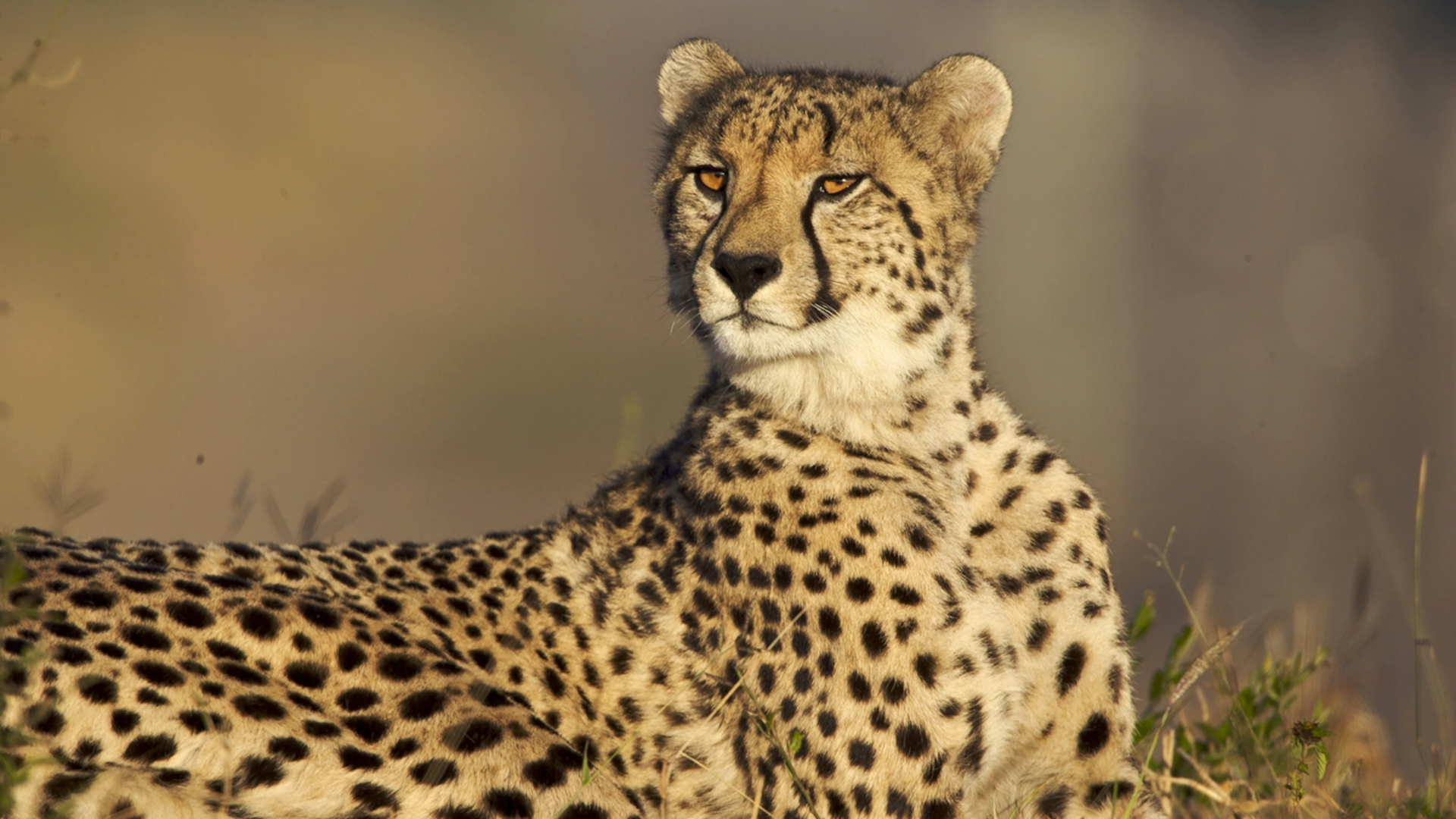 |
| Photo: National Geographic Kids |
The cheetah is the world's fastest land mammal. With acceleration that would leave most automobiles in the dust, a cheetah can go from zero to 60 miles an hour in only three seconds. Wild cheetahs are thought to be able to reach speeds of nearly 70 miles an hour—although they can only sustain that speed for about 30 seconds. These cats are nimble at high speeds, able to make quick and sudden turns in pursuit of prey.
Even though their speed makes them fearsome hunters, cheetahs are the most vulnerable of the world’s big cats. The International Union for Conservation of Nature currently lists the cheetah as vulnerable to extinction. However, in recent years, scientists have argued that cheetahs should be considered endangered instead, pointing to sizable losses in cheetah populations. There are fewer than 7,000 adult cheetahs remaining in the wild.
Cheetahs are famous for their tawny coats covered in black spots, each arranged in a unique pattern to help the animals identify one another. Bold black stripes streak like tears from the inner corners of their eyes down to both sides of their mouths, and the ends of their bushy tails are encircled by black rings. As the only big cat with a semi-retractable claw—rather than the fully retractable claws that help lions tear flesh and climb trees—cheetahs are the sole member of the genus Acinonyx.
Cheetahs’ coats can vary depending on their habitat. Although they typically prefer open grasslands, cheetahs live in a range of habitats across eastern and southern Africa. One subspecies, the critically endangered Asiatic cheetah, can only be found in Iran, and only a few hundred are believed to be left.
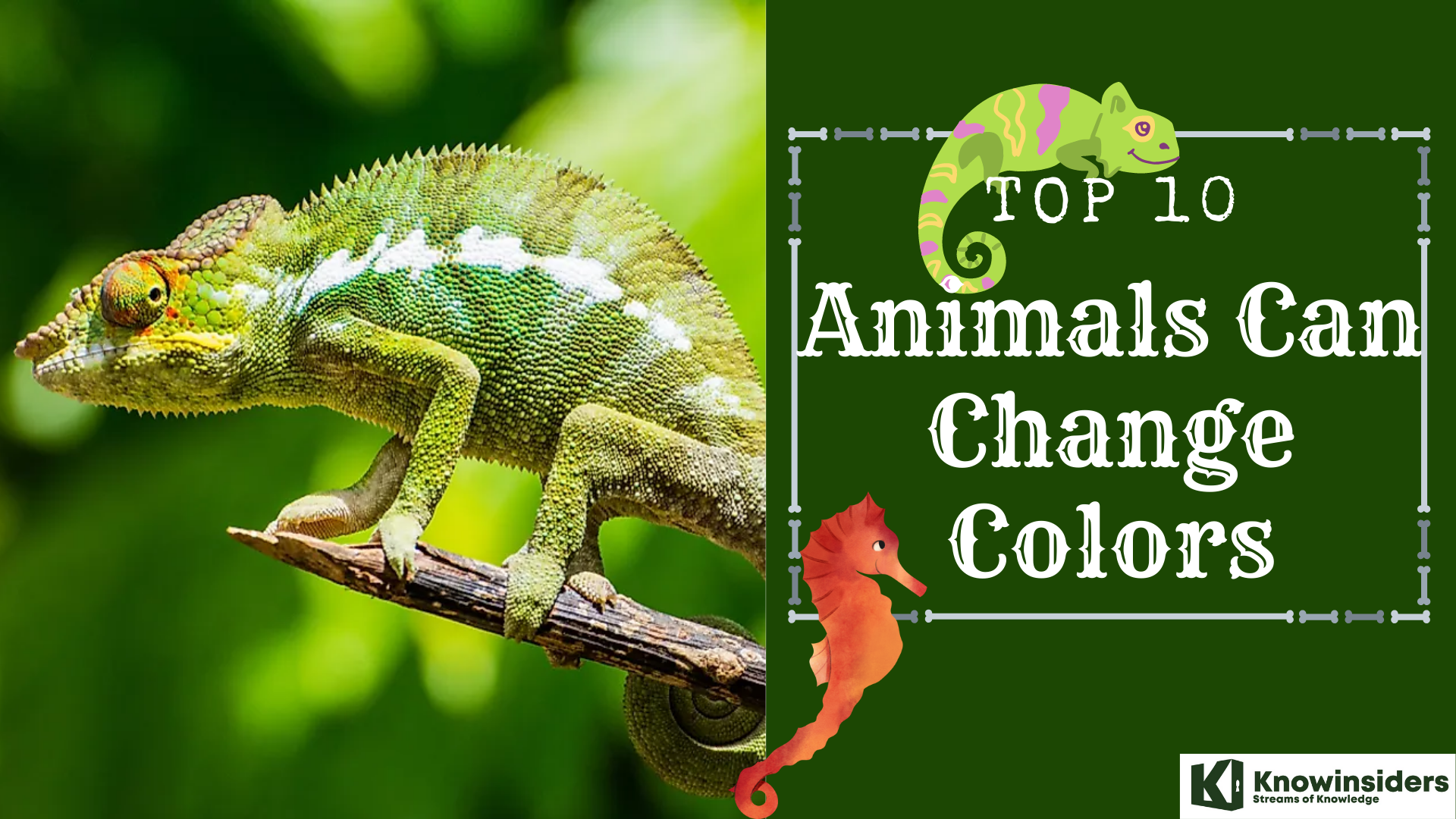 Facts About 10 Animals That Can Change Colors Facts About 10 Animals That Can Change Colors Check out the article below for top 10 animals that can change colors to camorflage themselves from danger, attracting their potential mates and expressing their ... |
4. Spur-Winged Goose
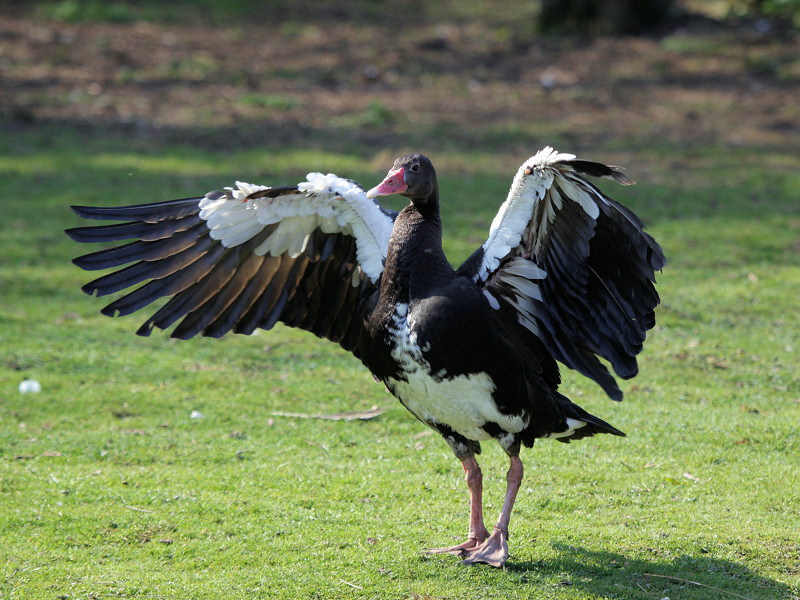 |
| Photo: Slimbridge Wetland Centre |
The Spur-Winged Goose is the world’s largest goose and can fly at 142kph (88mph).
The Spur-winged Goose, (Plectropterus gambensis), is a large bird in the family Anatidae, related to the geese and the shelducks, but distinct from both of these in a number of anatomical features, and therefore treated in its own subfamily, the Plectropterinae.
It occurs in wetlands throughout sub-Saharan Africa.
Adults are 75-115 cm (30-45 in) long and weigh about 5.5 kg (12 lbs), with males much larger than the females. They are the largest African waterfowl amd are, on average, the world's largest "goose". These geese are mainly black, with a white face and large white wing patches. The long legs are flesh-colored.
The nominate race P. g. gambensis has extensive white on the belly and flanks, but the subspecies P. g. niger, which occurs south of the Zambezi River, has only a small white belly patch.
The male differs from the female, not only in size, but also in that it has a larger red facial patch extending back from the red bill, and a knob at the base of the upper beak.
3. Frigate Bird
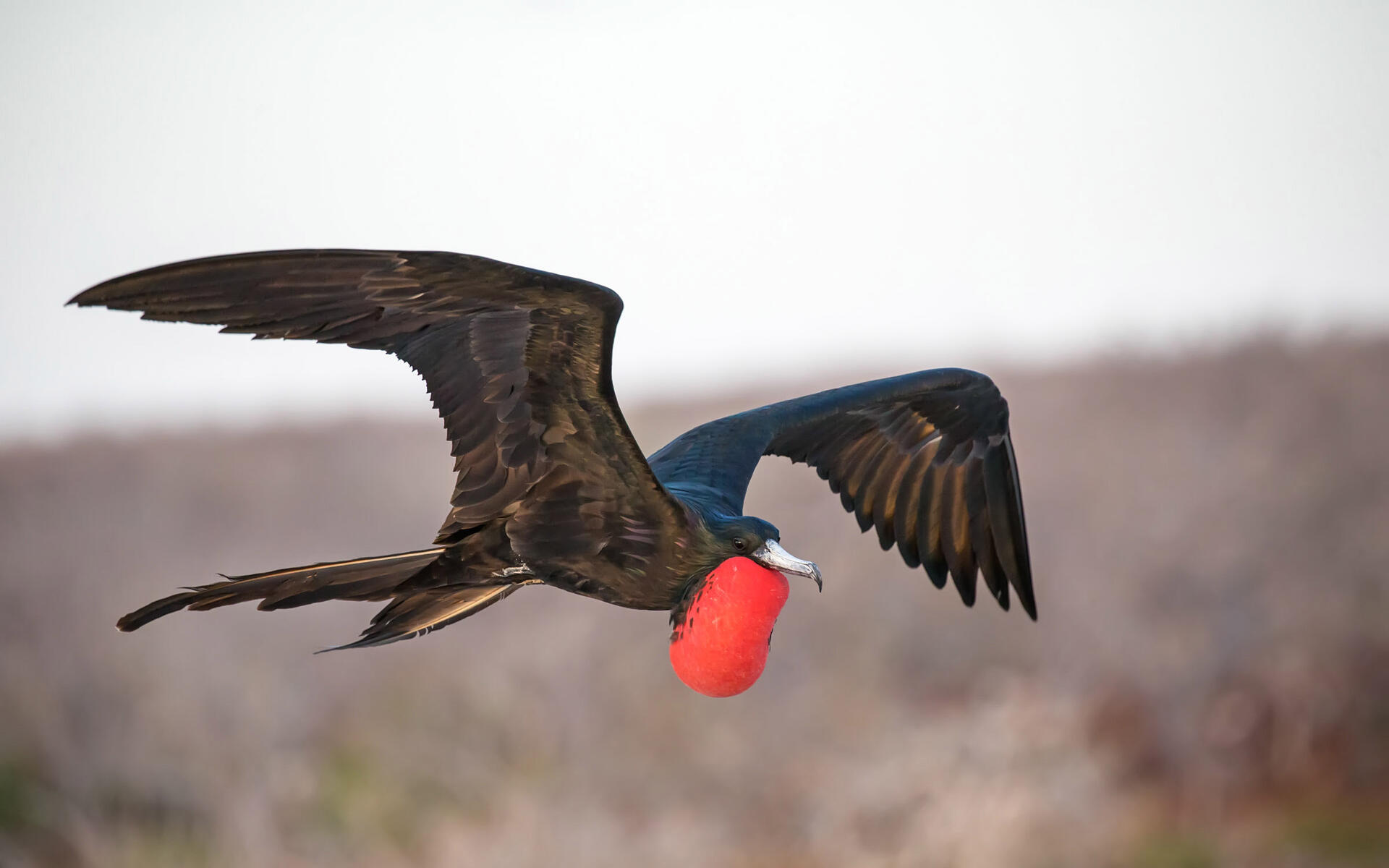 |
| Photo: National Audubon Society |
The frigate bird’s speed of 153kph(95mph) is helped by having the largest wingspan to body weight ratio of any bird. They are able to stay aloft for more than a week at a time!
Frigate bird, also called man-o’-war bird, any member of five species of large seabirds constituting the family Fregatidae (order Pelecaniformes or Suliformes). Frigate birds are about the size of a chicken and have extremely long, slender wings, the span of which may reach to about 2.3 metres (nearly 8 feet), and a long, deeply forked tail. In general, adult males are all black, and adult females are marked with white below. The birds have a bare-skinned throat pouch, which in courting males becomes bright red and is inflated, for display purposes, to the size of a person’s head. Other distinguishing characteristics are the almost helpless tiny feet with four webbed toes, and a long hooked bill that is used in attacking and robbing other seabirds of their fish.
2. White Throated Needletail
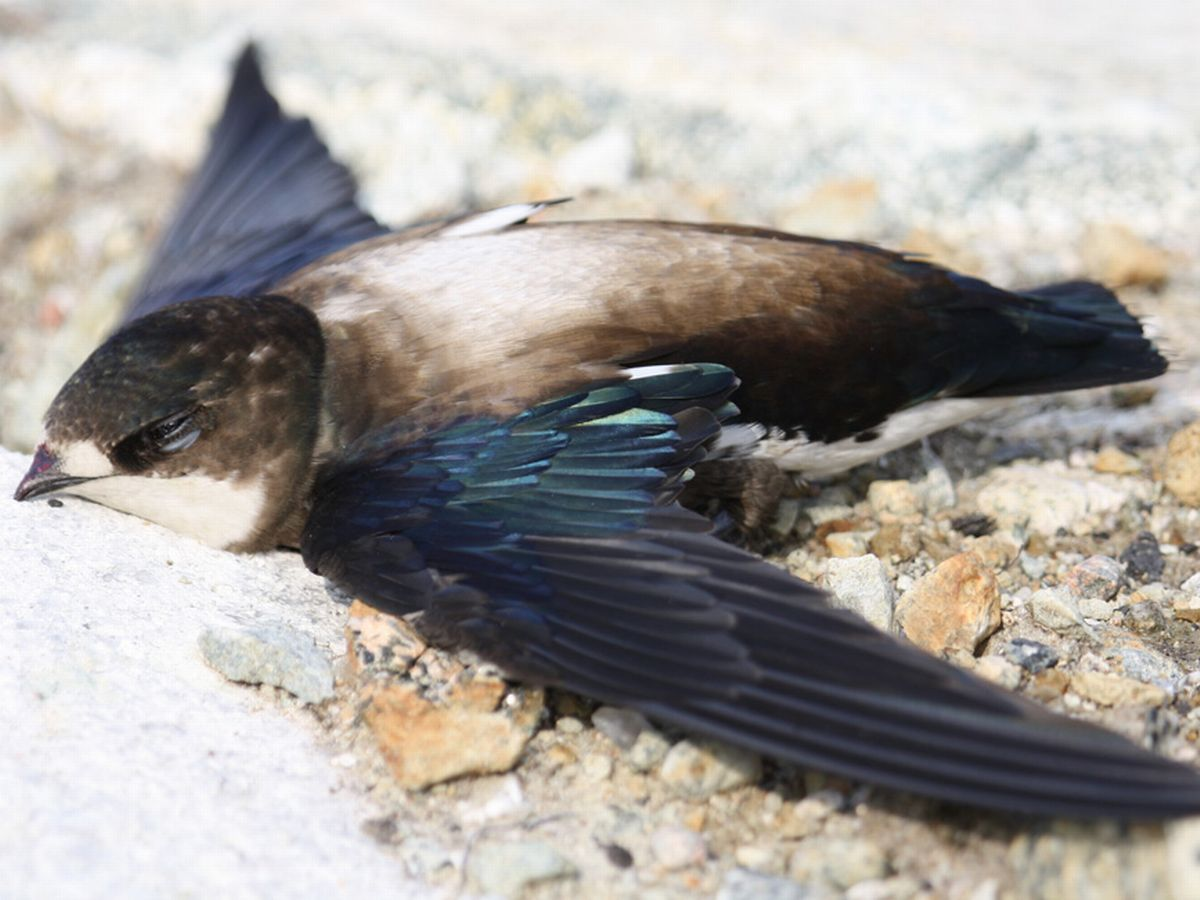 |
| Photo: Mirror |
The White Throated Needletail (also known as the Spine Tailed Swift) is the fastest bird in powered flight, with a top recorded speed of 171kph/106mph!
White-throated Needletails occur in Australia only between late spring and early autumn, but mostly in summer, when they sometimes form large flocks, appearing as a swirling cloud of birds. They have been seen catching flying insects at heights of more than a kilometre. Sometimes they form mixed-species feeding flocks with other swifts, such as Fork-tailed Swifts or swallows. These feeding flocks may be associated with thunderstorms, the uplift of which may assist with their flight and carry insects high into the air.
This large swift has long curved wings and white markings. The plumage of the White-throated Needletail is predominantly grey-brown, glossed with green and the wings are long and pointed. The tail is short and square, with the protruding feather shafts giving a spiky appearance. The throat and undertail are white. It was formerly known as the Spine-tailed Swift, but it is now placed in its own genus. It is also sometimes known as the Storm-bird or Stormbird.
1. Peregrine Falcon
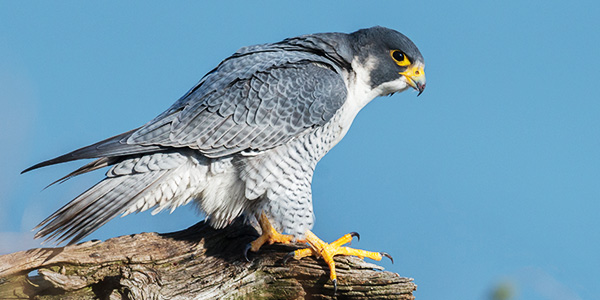 |
| Photo: National Wildlife Ferderation |
Peregrine falcons are the fastest creatures on the planet, reaching speeds of over 321 kph (200 mph) as they dive to catch their prey. They are also one of the most adaptable and can thrive in urban areas surrounded by humans. However, peregrine falcons have a history of persecution, which has pushed them to the very edge of extinction before now though they are currently listed as least concern on the IUCN Red List of Threatened Species.
Peregrine falcons are one of the largest and most powerful species of falcon. They have long, bluntly pointed wings and a relatively short tail, with dark blue wings and head. Their pale breast is spotted, and the undersides of their wings are barred with dark stripes. The crown of the head is dark, and they have a black ‘moustache’ which gives them a hooded expression.
Juvenile peregrines look slightly different to the adults with dark brown plumage, streaks on the underside of their body and pale tips to their feathers.
Peregrine falcons live mostly in open country, hunting over marshes, estuaries and agricultural land.
During the breeding season, they make their nests on crags and rock faces including sea cliffs, quarries and, increasingly, buildings in urban areas. Tower blocks, bridges and cathedrals offer the perfect urban alternative to high cliffs, while feral pigeons and starlings provide a reliable source of food.
 Top 10 Most Popular Pets In the UK Top 10 Most Popular Pets In the UK Keep reading the article below for top 10 most popular and loved pets in the UK. |
 Top 10 Most Popular Pets in Australia Top 10 Most Popular Pets in Australia To know more about 10 best popular pets in Australia, keep reading the article below. |
 Top 10 Most Popular Pets In The United States Top 10 Most Popular Pets In The United States Pets are the best companions of the Americans, and there are many different type of pets, from big to small. Keep reading to know more ... |
 Top 10 Most Popular Pets In The World Top 10 Most Popular Pets In The World Pets are human's best companions, and are globally loved and kept in household. Here is the 10 most popular pets in the world. |


























